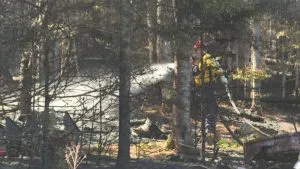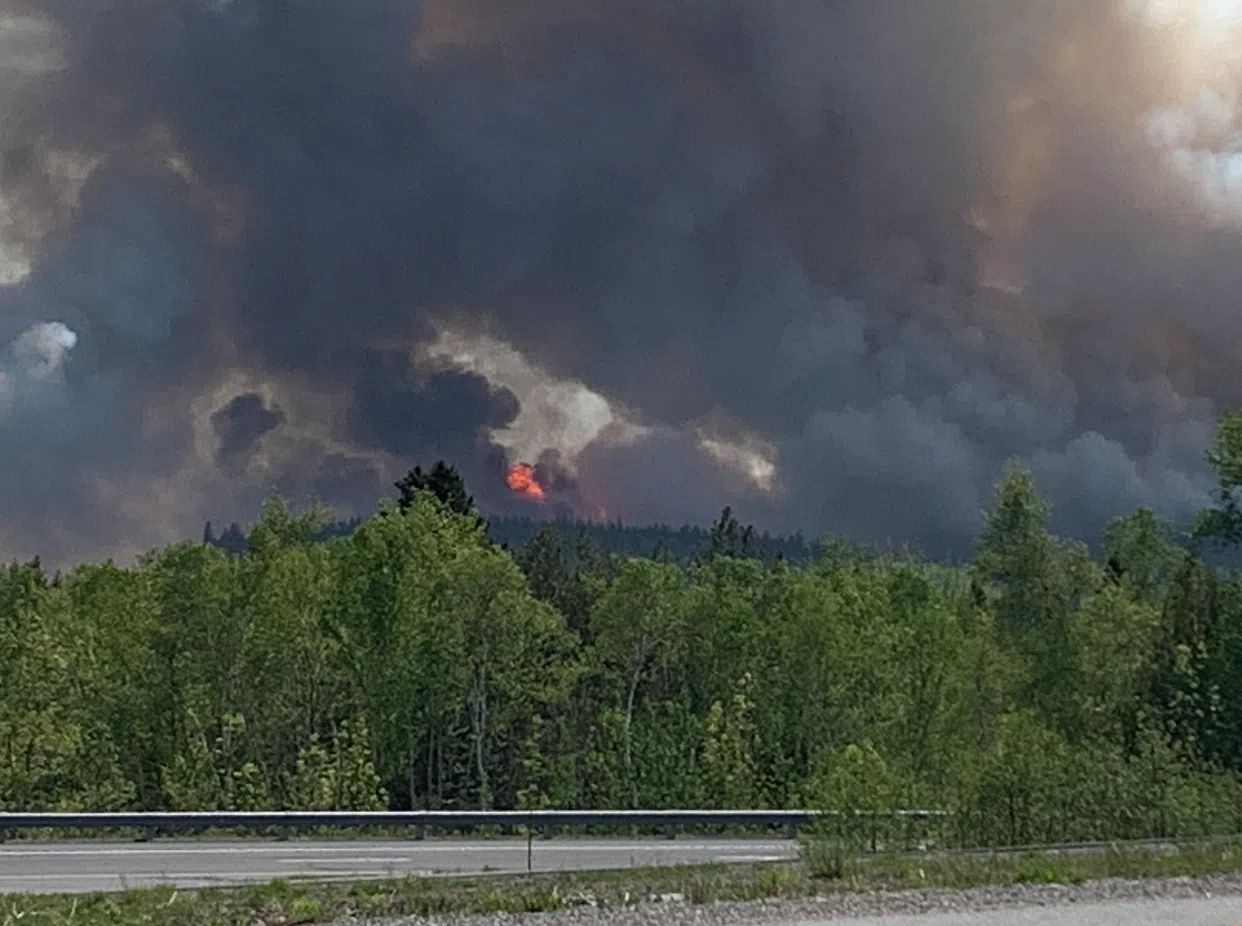An after-action report released by the New Brunswick Emergency Measures Organization said communication during the Stein Lake wildfire near Saint Andrews in 2023 was challenging.
The wildfire burned more than 500 hectares, surpassing the province’s 10-year average and was started by an ATV that caught fire, according to Saint Andrews Fire Chief Kevin Theriault.
An investigation by The Courier showed that there was a failure to issue an Alert Ready during the fire. Through a Right to Information request, it was revealed that the province felt it didn’t have enough information to issue the alert.
“As an aside, the Alert Ready website describes the type of alerts that should be considered for broadcasting, but it does not state any criteria to do so,” an email obtained by The Courier read. “The criteria are situation dependent, and the decision made by the local government,t with either the RCMP and NB Emergency Measures Organization in support by sending in the Alert.”

Bocabec saw New Brunswick’s largest forest fire in 2023. Image: Patrick Watt/CHCO-TV
Former mayor Brad Henderson said in interviews with The Courier that he was never contacted about issuing an Alert Ready.
“There was no official that ever called me that evening to say, ‘What do you think?’” he said in an interview last year. “I will say that when it was time to tell people to return home, I was consulted then, but the night of, there was no consultation whatsoever, as far as I know.”
The new report shed light on the issues with communication, but said overall the departmental agencies reacted well.
“In retrospect, Regional Emergency Operations Centre (REOC) should have been activated and equipped with the essential personnel to enable the better coordination of reports and situational awareness,” it said.
It also spoke to confusion around the evacuation of local residents, which was made by the local fire department.
“There was confusion regarding the evacuation of the rural area of Bocabec. The first responders on scene made the decision to ask the local community to voluntarily evacuate their homes given the immediacy of the wildfire and the time available for action,” the report said.
“Justice and Public Safety (JPS) was not asked to declare a State of Emergency (SOE), thus there was some confusion amongst the supporting groups regarding how to act. It is recommended that all rural districts be informed on the process requesting a SOE declaration.”
It said the timeliness and accuracy of the information being shared between the Provincial Emergency Operations Centre and the department, agencies and other organizations “varied” at times.
“Clear lines of communications, standardized formats for reports and returns, and time limitations for briefing should be developed and implemented to enhance communications,” the report said.
No one from the department was available for an interview, but in a statement, it said the wildfire presented some challenges for responding, coordinating, and supporting organizations.
“The response was successful, but the participants did learn how to further improve actions regarding response, communications and preparedness,” it said in the statement.
All but one of the recommendations have been completed, it said in the statement.
What the recommendations were
The recommendations largely centred around the communication during the wildfire, response and preparedness, with 12 in total.
It indicated a need for more specific information and communication between departments needed to improve, including within reports but also formalizing plans to improve the deployment of local emergency operations centres.
At least one said Horizon Health only learned of the wildfire through social media “by a local town official.”
Several recommendations described the communication as “varied, inconsistent and unclear,” especially with the Department of Transportation and Infrastructure.
It said “road closures and traffic control was not effective,” recommending it review and revise provincial processes and procedures for traffic control as required.

A new after-action report revealed challenging communications and 12 associated recommendations. Image: CHCO-TV
The report outlined issues with coordination at the reception centre and the Canadian Red Cross (CRC).
“There was no designated point of contact other than the Reception Centre where evacuees could seek assistance or ask questions,” it said.
Recommending it “readily consider CRC Call Centre activation in conjunction with CRC Reception Centre activation to improve public information.”
It said “information flow between PEOC and Department of Natural Resources and Energy Development (DNRED) appears to be ad hoc with minimal consistency.”
Further recommendations dealt with issuing a state of emergency, it said there was confusion over the evacuation of residents and whether an SOE had been declared.
“Readily consider a SOE declaration for rural district response operations. Improve the planning and coordination of evacuation orders,” the recommendation read.
It said there was confusion over road closures, where resources were during the wildfire, and updating NB511, which shows various road closures.
The report indicated it was difficult to get information out to the public.
“The evacuation order was unclear at times if it was signed or not. No information was communicated to the first responders when residents were allowed to return to their residences. DNRED does not have authority to issue evacuation orders,” it said.
It also spoke to radio compatibility issues with the radios.
According to the report and the department, all those recommendations have been completed. It doesn’t indicate when in the time since 2023 those were finished.
Only one remains outstanding, scheduled for completion this month, related to the Office of the Fire Marshal.
“There was no formal policy to mobilize the volunteer fire department to assist in tasks outside of regional associations,” the report read.
Recommending, the “Office of the Fire Marshal (OFM) will formalize Structural Protection Units (SPU) Program with DNRED, including agreements with two regional firefighter associations SPU trailer acquisition, and interface training for firefighters.”
The final recommendation is slated to be finished in July 2025.







